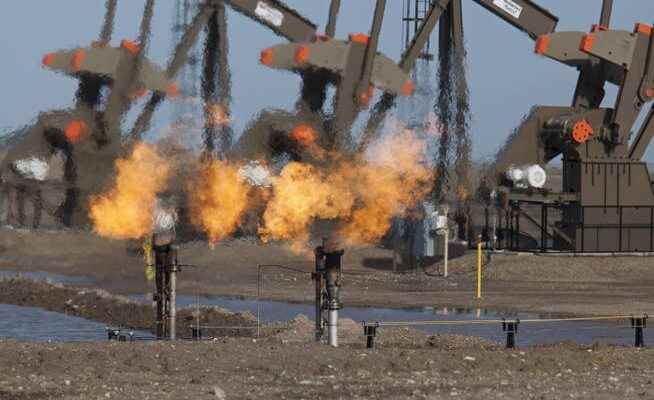From Monday, the EU will be banned from importing Russian crude oil that is transported by ship. To the very end, there was a heated debate about the level of a price cap that would allow trading of crude oil from Russia outside Western countries.
There are turbulent weeks and months ahead of the oil market.
According to media reports, the EU member states have agreed on a price cap for the global purchase of Russian oil, which is processed via European traders, insurance companies and shipping companies. The price cap is said to be $60 per barrel. The result came about after lengthy negotiations. Most recently, Poland had asked for a lower value in order to further reduce oil revenues for Russia. However, Warsaw apparently gave in on Friday.
Initiative of the G-7
The price cap goes back to an initiative of the G-7. The group of seven democratic industrial nations includes the USA, Canada, France, Great Britain, Italy and Germany as well as Japan. The time for the decision was pressing because from Monday, December 5, the EU import ban on Russian crude oil coming to Europe by sea will come into effect. In the original version, this also banned European companies from trading, financing and insuring the transport of Russian oil for customers in third countries.
However, Washington in particular objected that this could unduly affect the world’s oil supply, which would lead to high oil prices. That’s why the idea of a price cap, which was agreed within the framework of the G-7, came up: For Russian oil, an upper price limit is introduced for the price at which it can be sold outside western countries, which have an import ban anyway.
As long as third countries adhere to this upper limit, Western companies such as insurance companies, banks, dealers and logistics companies can offer their services. Trading in Russian oil priced below the cap is allowed. The irony of the proposed price cap is that it is partly intended to weaken the EU’s strict measures on Russian oil. On February 5, the EU will also introduce an embargo on Russian petroleum products such as petrol and diesel.
Russian oil is already trading at a discount
At the same time, a price cap is intended to ensure that Russia receives less revenue from the oil business without restricting global supply. Brent crude oil from the North Sea is currently trading at just under $87 a barrel. However, Russian oil is already being sold at a discount to Brent, which is currently a good $23. This means that the gap between the upper price limit and the average Russian price is small. However, the price of the relevant Russian variety Urals is already below the price cap, so the instrument has little impact.
However, the price cap should contain a mechanism that ensures that the upper limit is at least 5 percent lower than the respective market price for Russian oil. It is questionable whether important importers such as China, India or Turkey want to participate in such a price cap. Western countries believe they have leverage because a large proportion of the world’s oil trading services are provided by European firms. However, Russia has already said that it will no longer supply any country that participates in this mechanism.
OPEC+ meets on Sunday
The oil market is therefore facing turbulent weeks and months. Because it is still unclear how all this is to be handled and which countries will implement this. On Sunday, the petrostates, which have united in the Opec+ group, will also meet for a virtual meeting. Saudi Arabia and Russia are the dominant members. After a surprisingly high reduction in production at the last meeting, it is now expected that the oil countries will initially wait and see. Another cut, which will probably not be as high as last time, cannot be ruled out according to observers.
